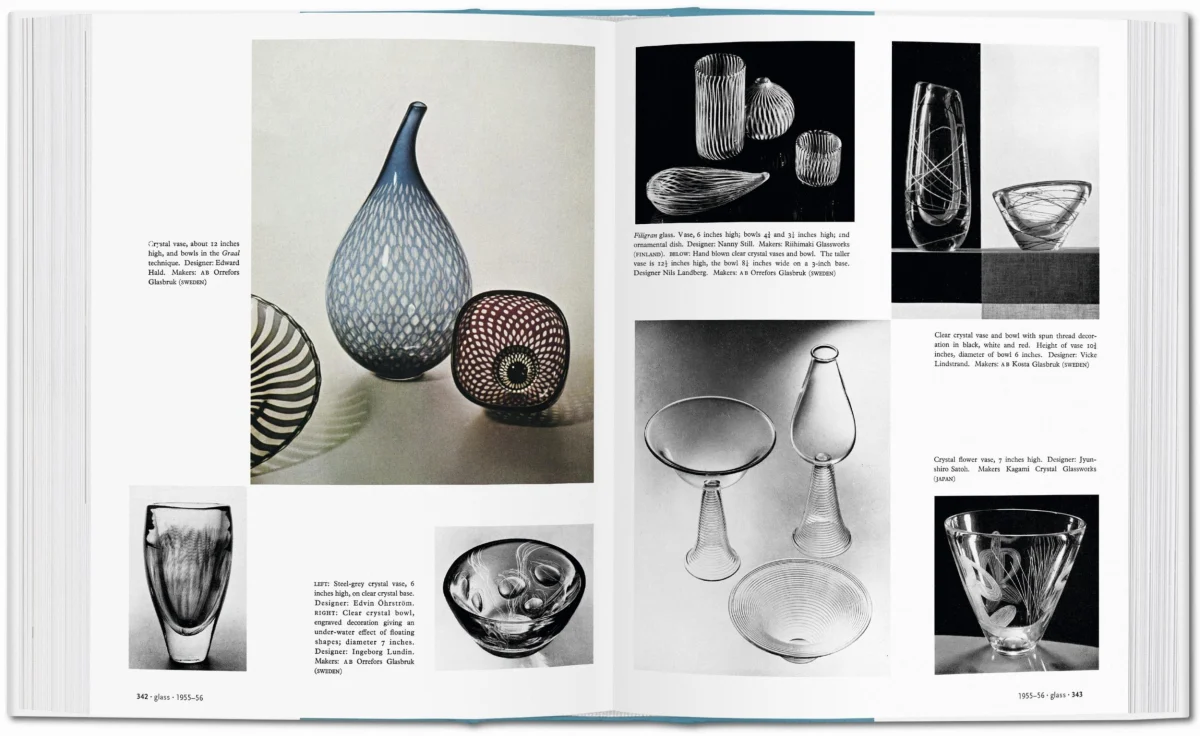1 / 6
Decorative Art 50s
40Edition: Multilingual (English, French, German)Availability: In StockLatex, plastics, and fervent consumerism: discover the design trends and materials which literally shaped the American 1950s. This overview explores a decade of postwar rebuilding driven by idealistic vision and positive spirit, applied from the suburbs to the inner cities, and from furniture to metalware. This edition revives the rare and revelatory Decorative Art, The Studio Yearbook to trace the materials and styles behind the midcentury boom.
Hardcover, 7.7 x 10.0 in., 3.30 lb, 576 pages
“An indispensable tool for collectors: names are named, designs praised and accusations made.”

Decorative Art 50s
40Postwar Boom Decor
Design trends and styles of the 1950s
Published annually from 1906 until 1980, Decorative Art, The Studio Yearbook was dedicated to the latest currents in architecture, interiors, furniture, lighting, glassware, textiles, metalware, and ceramics. Since the publications went out of print, the now hard-to-find yearbooks have become highly prized by collectors and dealers.
TASCHEN’s Decorative Art 50s explores the spirit of optimism and the fervent consumerism of the decade. Technology and construction had been enervated by research during the war and these discoveries could now be applied in peacetime. The popularization of plastics, fiberglass, and latex literally shaped the decade. Rising incomes and postwar rebuilding on both sides of the Atlantic led to a massive housing boom in both the suburbs and inner cities, and these new homes reflected the new style. While European design was extraordinarily inventive, American design was looking to an idealized vision of the future—between them a modern idiom was developed that can be seen vividly on these pages. This overview of the decade includes the work of such famous innovators as Charles and Ray Eames, George Nelson, Hans Wegner, and Gio Ponti.
TASCHEN’s Decorative Art 50s explores the spirit of optimism and the fervent consumerism of the decade. Technology and construction had been enervated by research during the war and these discoveries could now be applied in peacetime. The popularization of plastics, fiberglass, and latex literally shaped the decade. Rising incomes and postwar rebuilding on both sides of the Atlantic led to a massive housing boom in both the suburbs and inner cities, and these new homes reflected the new style. While European design was extraordinarily inventive, American design was looking to an idealized vision of the future—between them a modern idiom was developed that can be seen vividly on these pages. This overview of the decade includes the work of such famous innovators as Charles and Ray Eames, George Nelson, Hans Wegner, and Gio Ponti.
The editor
Charlotte and Peter Fiell are well-known design authors having written over sixty books on the subject. Among their various areas of specialization is the realm of transportation design in all its diverse forms. The Fiells have lectured widely, guest taught courses, curated exhibitions, and consulted manufacturing companies, museums, salerooms, and major private collectors around the world. Together, they have written numerous TASCHEN books.
Decorative Art 50s
Hardcover, 19.6 x 25.5 cm, 1.50 kg, 576 pagesISBN 978-3-8365-8444-9
Edition: Multilingual (English, French, German)Download product images here
4.5
Full of information, but b/w
October 27, 2021
Nice book full of information about each design period. With the details from interiors, textiles, colors, and accessories. the only thing I don't like is that mainly the pages are b/w, which influences and demolishes full visual impression of certain elements. For example, you see the photos of the interior, but they are b/w, so only by reading the description you can imagine the colors, not all of them are described though. Some need to Google to get the full image.Must have
October 27, 2021
This book is a MUST HAVE for all lovers of mid-century design. It contains photos of contemporary interiors, furniture and accesories





